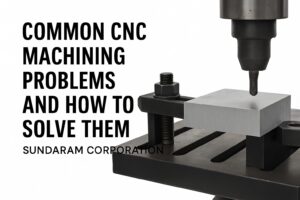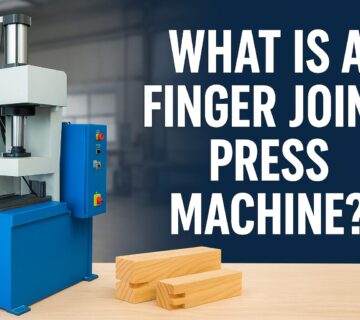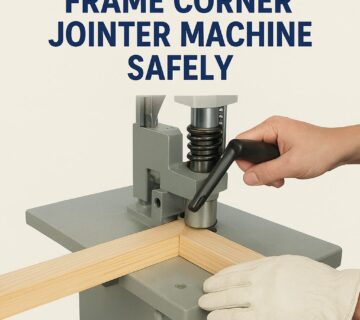Common CNC Machining Problems and How to Solve Them – Sundaram Corporation

- Tool Wear and Breakage
Problem: Tools breaking prematurely or wearing out too quickly leads to poor part quality and increased costs.
Causes:
- Incorrect feed rates or spindle speeds
- Inappropriate tool material for the job
- Dull or damaged tooling
Solutions:
- Select the optimal tool for each material.
- Regularly inspect and replace worn-out tools.
- Adjust feeds and speeds according to manufacturer recommendations.
- Utilize coatings or coolants to improve tool longevity.
- Poor Surface Finish
Problem: Finished parts have rough textures, swirl marks, or visible chatter, compromising their appearance and function.
Causes:
- Excessive vibration (chatter)
- Blunt cutting tools
- Incorrect cutting parameters
- Poor workholding
Solutions:
- Balance tool holders and minimize tool overhang.
- Use sharp, high-quality tools.
- Reduce feed rate and spindle speed if needed.
- Secure workpieces with proper fixturing and clamps.
- Dimensional Inaccuracies
Problem: Parts fail to meet specified tolerances, resulting in rework or scrap.
Causes:
- Machine calibration errors
- Loose or worn ball screws/bearings
- Temperature variations during machining
Solutions:
- Calibrate machines regularly.
- Tighten or replace worn components.
- Monitor and control ambient temperature in the shop.
- Run test cuts and verify measurements before mass production.
- Machine Vibration (Chatter)
Problem: Unusual noise and vibration during cutting can shorten tool life and reduce accuracy.
Causes:
- Worn spindle bearings
- Improper tool holding
- Unbalanced cutting operations
Solutions:
- Inspect and replace bearings as needed.
- Use balanced and properly installed tool holders.
- Adjust cut depth and speed to minimize vibrations.
- Clamping and Fixturing Issues
Problem: Workpieces shift or vibrate during machining, leading to poor accuracy and potential damage.
Causes:
- Insufficient or improperly set clamps
- Damaged or worn fixtures
Solutions:
- Regularly inspect and maintain fixturing equipment.
- Use anti-slip mats or custom fixtures for irregular parts.
- Confirm workpieces are tightly secured before starting each job.
- Overheating
Problem: Machines and tooling become excessively hot, resulting in rapid tool wear and accuracy problems.
Causes:
- Insufficient coolant flow
- Clogged coolant lines or fans
- Overly aggressive machining parameters
Solutions:
- Ensure adequate coolant supply and flow.
- Clean coolant systems and check for leaks.
- Adjust speed and feed settings to match the application.
- Programming and Software Errors
Problem: Incorrect or buggy CNC code causes crashes, axis drift, or incomplete jobs.
Causes:
- Coding mistakes (wrong G- or M-codes)
- Data entry errors
- Outdated or incompatible software
Solutions:
- Double-check all CNC code before running on the machine.
- Use simulation software to detect potential issues.
- Regularly update controller firmware and software to newest versions.
- Electrical and Sensor Failures
Problem: Machines won’t power on, lose reference, or throw error codes unexpectedly.
Causes:
- Faulty wiring or blown fuses
- Power fluctuations
- Malfunctioning sensors or limit switches
Solutions:
- Regularly inspect and maintain electrical components.
- Use surge protectors and maintain stable power supply.
- Test and clean sensors routinely; replace any defective units.
At Sundaram Corporation, we believe proper machine care, operator training, and preventive maintenance are the keys to smooth CNC operations. By recognizing the symptoms and root causes early, you can keep your machining processes running at peak performance and deliver exceptional results every time.
If you’re looking for world-class machinery solutions—or personalized support to tackle CNC problems—our expert team is here to help you elevate your productivity and product quality.
Empower your workshop with Sundaram Corporation: Innovation, Trust, and Reliability in CNC Machining.

